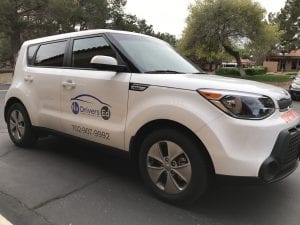Don’t Hide Your Teen Driver from your Insurance Company
While some parents may simply forget to add their newly licensed teen driver to their insurance policy, others intentionally do not notify their carrier about the new driver in the house in an effort to save money from the unavoidable increase that comes when their teenager gets their Nevada driver’s license.
Don’t make this mistake…
In Nevada, insurance companies require you to provide a list of all drivers in the home, regardless of whether or not they are going to be driving the insured vehicle. Should your teen driver not be disclosed and then becomes involved in an accident in the insured vehicle, your insurance company can legally deny any claims associated with that accident. Needless to say, this could be a devastating financial blow to a family as they would be responsible for their own repairs to the insured vehicle and very likely personally responsible for for damage and injuries caused to others.
In the State of Nevada, studies show a 132% increase in insurance premiums between an adult driver alone compared to an adult driver adding a teen driver to their insurance policy. Specifically, in Nevada, the average adult pays $1,113 per year on insurance. By adding a Nevada teen driver, that rate jumps up to $2,651 per year. These figures were based on a 2014 Honda Accord driven by a 40-year old driver with 100/300/50 liability coverage with comprehensive and collision. As you can see, the increase is quite substantial!
Saving Money on Insurance
With regards to gender equality, many think that the insurance carriers are out of line. The fact is, “gender equality” in most states does not apply to insurance companies while other states have outlawed the practice of charging different rates to males than female (Pennsylvania, Hawaii, Massachusetts, North Carolina, Montana). In general, there is not much dispute as to the fact that teen drivers are for more likely to be involved in a traffic accident than adults. What insurance companies have also found is that teenage boys present significantly more risk in becoming involved in a traffic accident than their female teenage counterparts. So, in Nevada, be prepared to pay more if you have a teenage son than you will if you have a teenage daughter.
Other Ways to Save
Now that the gender issue has been addressed, lets look at some other ways that you can save money if you have a Nevada teen with a driver’s license.
- Driver Training Discount: Most big insurance carriers offer some sort of discount when the teen takes a specified amount of driving lessons with a licensed driving school. The discounts range from 5% to as high as 25%
- Good Student Discount: Maintaining a GPA of 3.0 or better can result in a significant insurance discount for Nevada teens
- Good Driver Discount: Teens that exhibit good driving behaviors without tickets or accidents for a significant amount of time can also receive a nice discount
These are just a few of the discounts offered by many insurance carriers in Nevada. These are in addition to the usual discounts such as multi-car discounts, family plan discounts, low mileage discounts, etc. Always be sure to ask about these discounts as insurance carriers and agents might not be readily aware of your situation and the applicable situation that applies to you.


